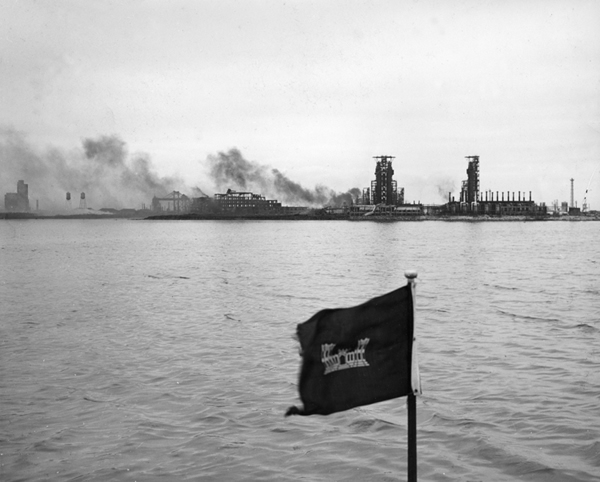 |
| Texas City, Texas, 1947, with the Corps Flag in the foreground |
| |
Shortly after 8 a.m. on Wednesday, the 16th of April, 1947, longshoremen were loading ammonium nitrate (fertilizer) onto the cargo ship Grandcamp at the port of Texas City, Texas. As they stowed the cargo—next to holds containing small arms ammunition—they noticed heat, smoke, and eventually fire. Unable to douse the flames, the crew evacuated, and at 9:12 a.m. the cargo in the Grandcamp detonated with massive force.
The powerful blast knocked people in nearby Galveston to their knees, shattered windows in Houston, and registered on seismographs in Denver. The port facilities were annihilated, as was the nearby Monsanto Chemical plant. Parts of Texas City were covered in a fog of oil deposits and ash and flooded by a tidal wave. The explosion immediately killed more than 500 people and wounded more than 5,000, as tons of steel flew in all directions, landing and igniting additional fires, and destroying freight cars, vehicles, homes, and businesses. To add to the devastation, the explosion ignited the ammonium nitrate in the cargo ship High Flyer. Fifteen hours later, at 1:15 a.m. on the 17th, the High Flyer exploded, causing more death and destruction.
Corps of Engineer personnel at Galveston District’s repair yard at Fort Point heard the deafening blast and immediately set out for Texas City by automobile, arriving forty-five minutes after the explosion. Col. David Griffiths, District Engineer, and his staff boarded the survey launches Ralph Millis and Guyer and headed for Texas City, arriving just thirty minutes after the first Corps personnel had reached the devastated town. Other agencies responding to the emergency included all branches of the military and the National Guard, the University of Texas, fire and police departments from surrounding cities, and the Red Cross, Salvation Army, and Boy and Girl Scouts.
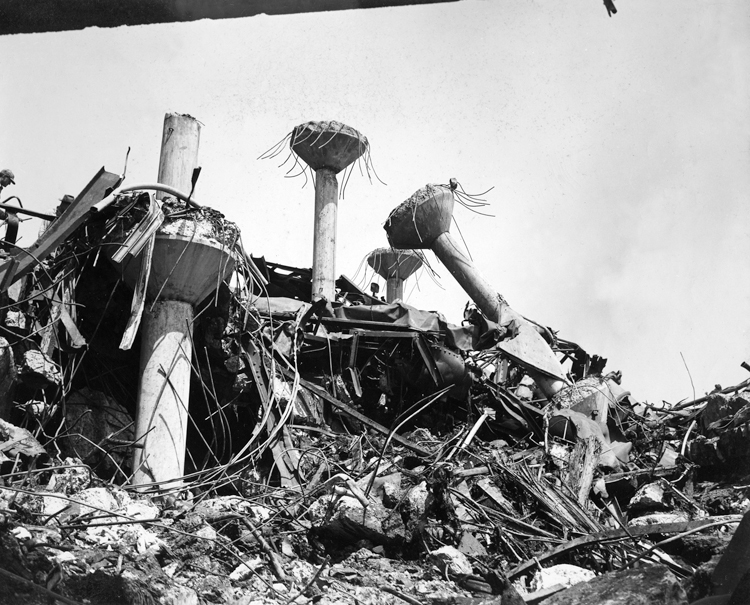 |
|
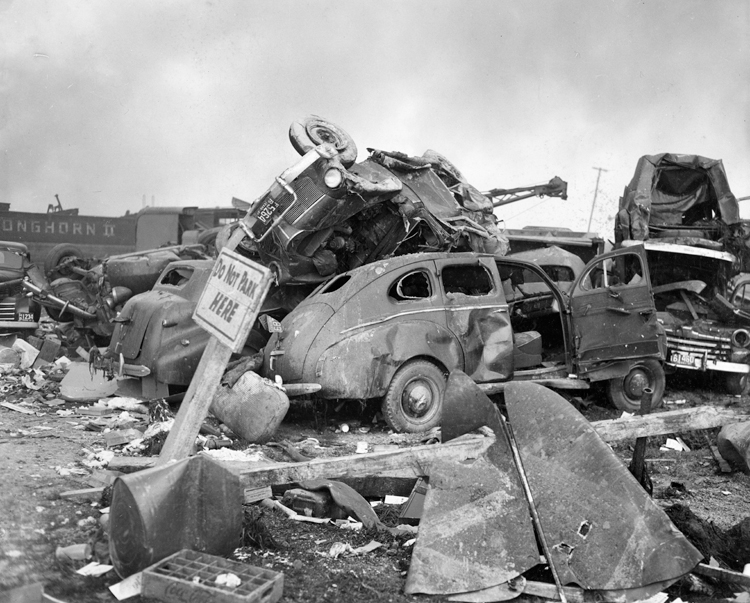 |
| Texas City, Texas, industry destroyed |
|
Destruction in Texas City. The sign reads "Do Not Park Here." |
| |
|
|
At the request of the chief of police, the engineers immediately established radio communications using their radio car and engineer boats. Galveston District personnel brought fire-fighting equipment, first aid supplies, and blankets to the disaster site. They transported the dead and injured to morgues and hospitals and supplied mobile emergency services until relief agencies arrived. When Fourth Army sent kitchens but no cooks, Corps personnel set up the kitchen and initially prepared meals for the firefighters and evacuation crews. Along the waterfront and in the port, Corps launches and tugs removed the dead and injured, relayed radio transmissions, searched for navigation obstructions, and began damage surveys of the ruined waterfront; much later the Corps also cleared wreckage from the harbor.
The Corps conducted rescue and relief activities at Texas City until 23 April 1947. For their disaster response efforts, General of the Army Dwight Eisenhower awarded personal commendations to Colonel Griffiths and the participating Galveston District personnel. Galveston District’s response at Texas City later became a textbook model, studied by Corps officers attending the disaster recovery lectures at the Fort Belvoir Engineer School.
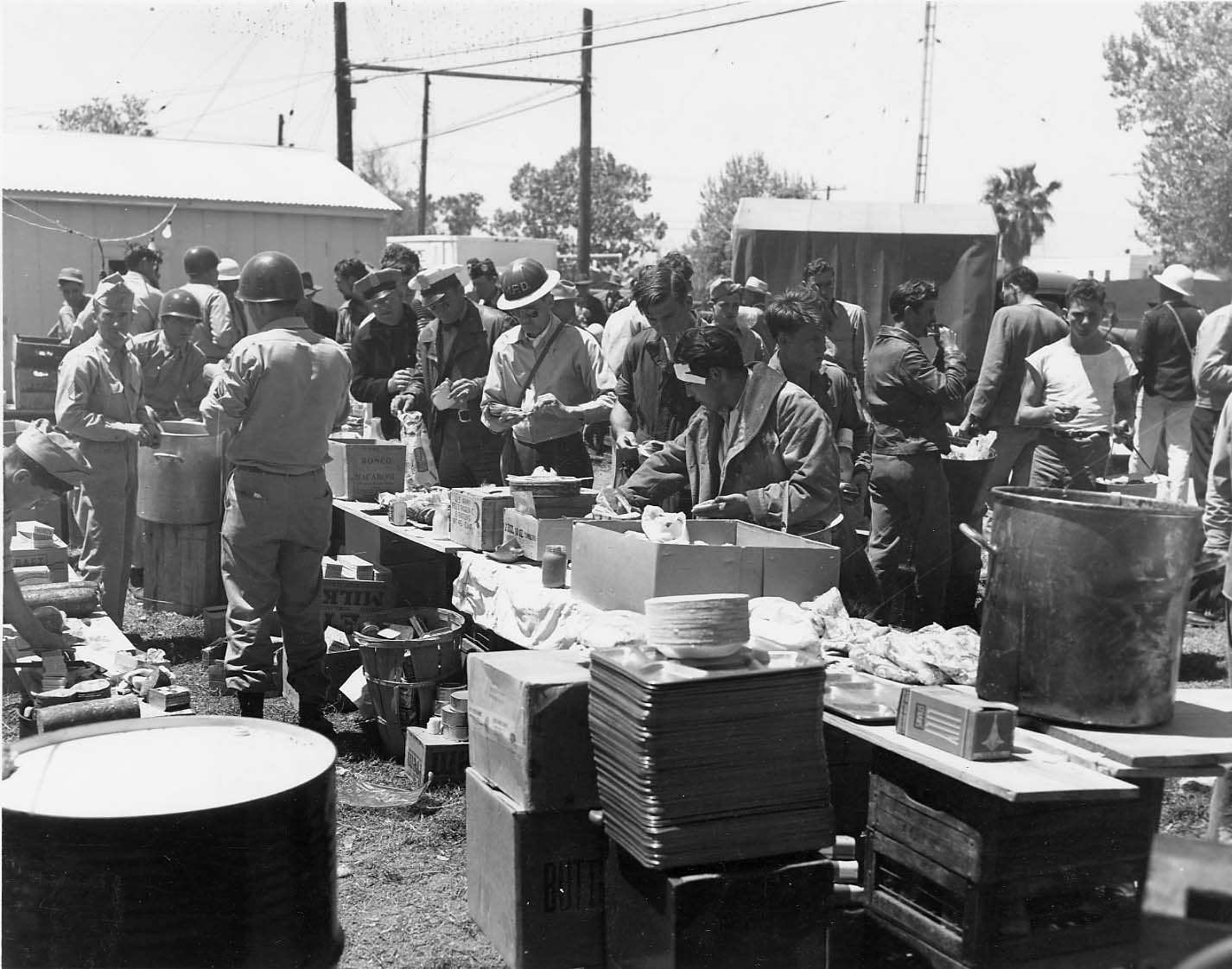 |
|
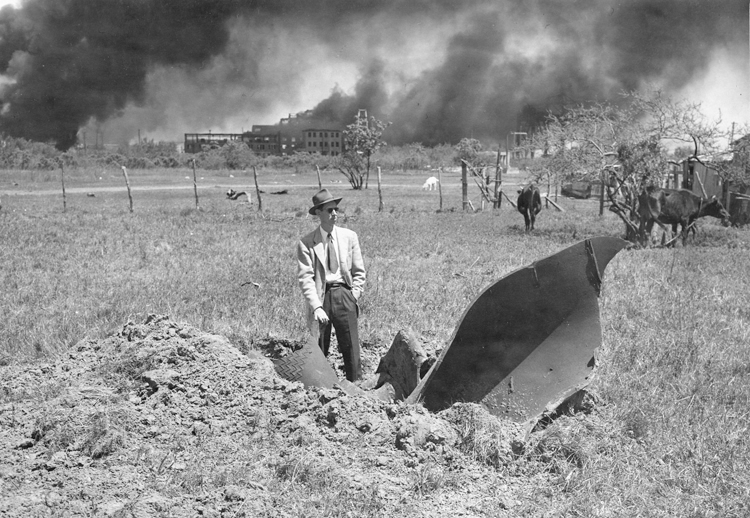 |
| One of the relief stations: Dazed residents of ill-fated city file quietly by for food which is served by cooks from the 41st Armored Infantry Battalion, 2d Armored Division, Camp Hood. The soldiers were flown to the stricken city, along with cooks from the 66th Tank Battalion, 2d Armored. Two shifts keep hot coffee and sandwiches available to the people 24 hours a day. |
|
Heavy debris flew from the site of the explosion and often ignited more fires. |
| |
|
|
For more on the Corps of Engineers' emergency operations mission, see the Office of History publications Situation Desperate (Origins to 1950) and Destruction Imminent (1950 to 1979).
* * *
November 2008. No. 114.